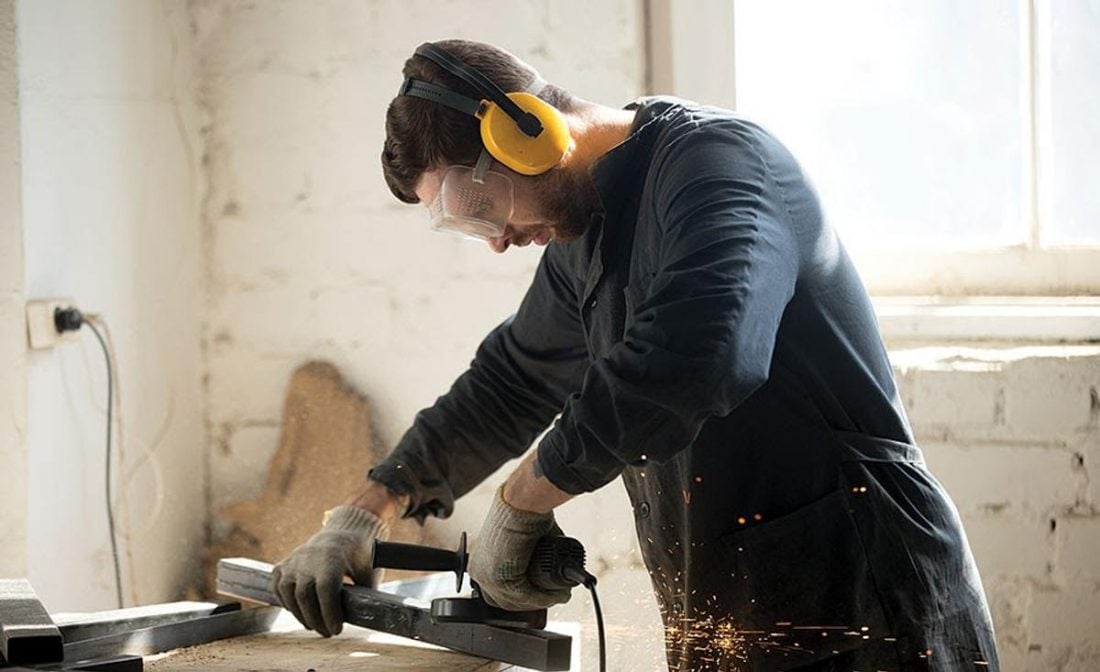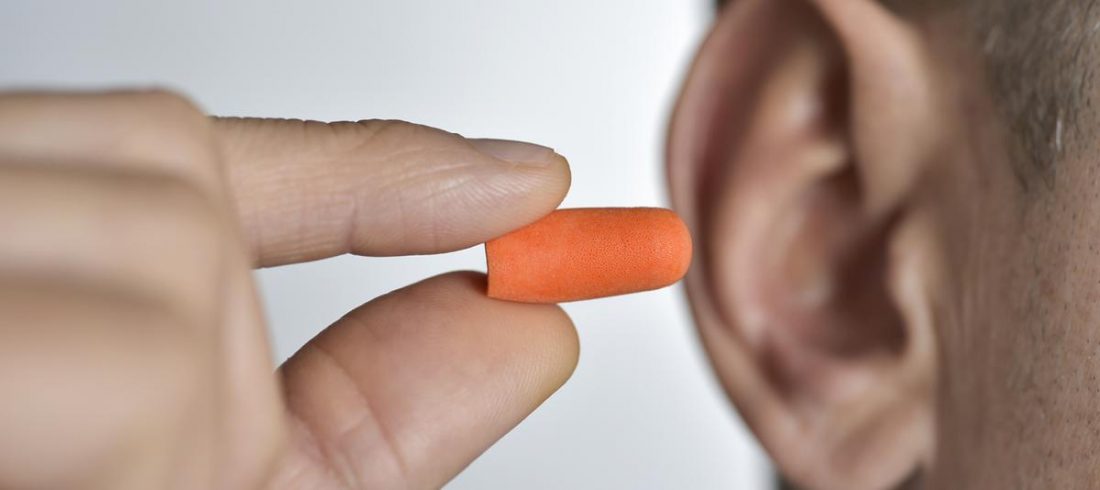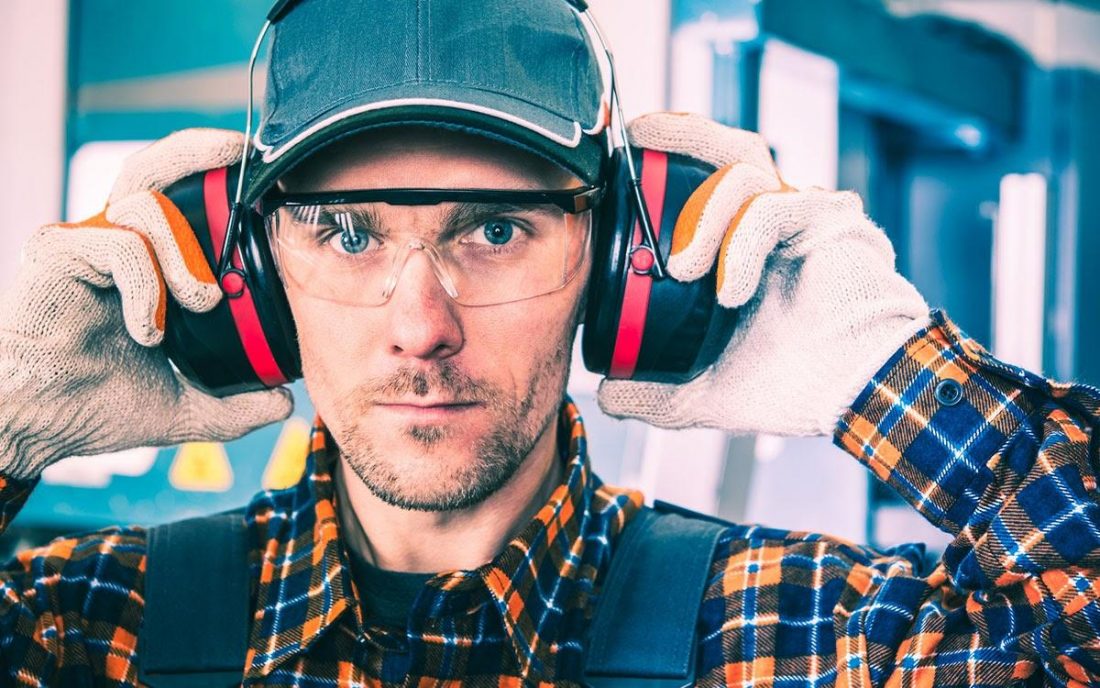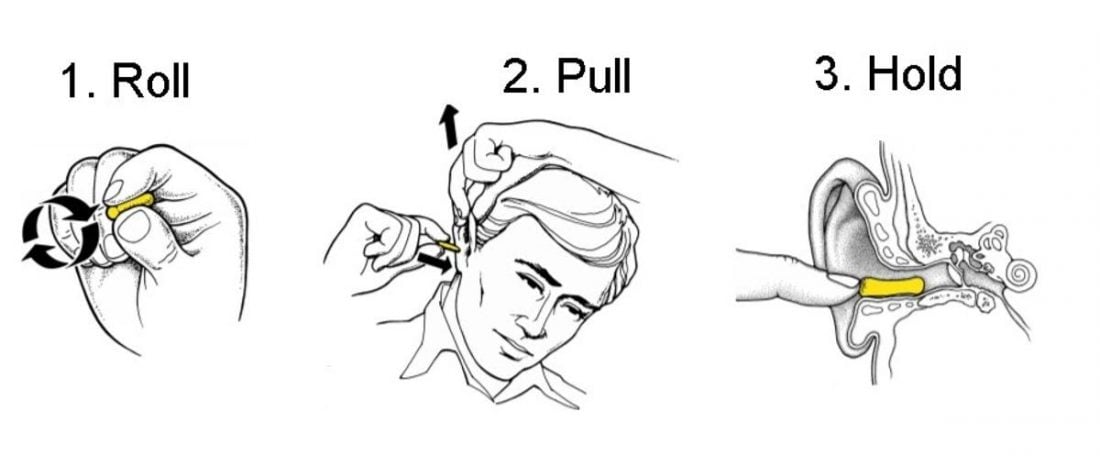In this post, you’ll be learning how to properly pick the right hearing protection that fits your needs. It will also include information on:
When you should get hearing protection The different exposure durations with their corresponding noise levels Pros and cons of ear plugs and ear muffs Different factors for you to consider How overall comfort plays a vital role in your choice And more!
So if you find the right hearing protection for you, then you should keep reading on. Let’s get started.
When Do You Need Hearing Protection?
As defined by Wikipedia, noise is any unwanted sound that is judged to be unpleasant, loud, or disruptive to hearing. It is measured in decibels (dB) which is a logarithmic scale* for sound intensity. Noise can be found everywhere we go and it is a part of our everyday lives – from the moment we wake up to our alarm clock, to the bustling sounds of honks and horns of cars stuck in traffic. We are all constantly exposed to noise, and if we’re not careful, run the risk of having permanent damage to our hearing. General discomfort, irritation and in severe cases, noise-induced hearing loss can often occur when you are exposed to excessive or high levels of noise. That is why it’s important to wear hearing protection devices (HPDs) when needed, especially if your job or hobby takes place in a noisy environment such as a construction site or shooting range. But when exactly do you need to wear an HPD? According to the National Institute for Occupational Safety and Health (NIOSH) and the Occupational Safety and Health Administration (OSHA), workers are legally required to use hearing protection when their 8-hr time-weighted average exposure reaches or exceeds 85 dB, A-weighted.
Table of noise exposure level and corresponding durations
Below is a summarized table of some of the possible noise exposure levels with their corresponding durations as provided by NIOSH.
Common Types of Hearing Protection Devices
The most common types of hearing protection devices are: Each has its own unique physical characteristics, advantages, and disadvantages. They are both great to add to your hearing protection arsenal as they offer you unique benefits, but take note that you should still consider their respective features.
Ear Plugs
An example of earplugs: Mack’s Ultra Soft Foam Ear plugs
Earplugs are small, tubular HPDs that can either be manufactured to specifically fit your ear while making it reusable for continued use or mass-produced in order to be more disposable. Disposable earplugs are usually made from foam and are only meant to be used once before discarding them due to hygienic reasons. Because they’re made from memory foam, they start to expand and take more space after being compressed inside the ear canal. Reusable earplugs, on the other hand, are usually made of silicone and rubber, meaning you can wash them when needed. The tip of this type of earplug looks like a ball that is to be inserted inside the ear canal, while the other end is meant to protrude to make it easier to put on and remove. This HPD is generally simple to use and costs less than ear muffs while also providing you with more comfort when working in hot environments. However, the small size of this HPD makes it so that you might easily misplace them or improperly insert them in your ear. In addition, you should also practice good hygiene as it is required that you have clean hands when putting on earplugs in order to prevent dirt or debris from entering your ear.
Ear Muffs
An example of earmuffs: Impact Sport Sound Amplification Electronic Shooting Ear muff
On the other hand, earmuffs are a lot more durable than earplugs and are easier to put on and remove. Earmuffs are basically two ear cups attached to a headband that uses adequate clamping force to make a seal around your ears that reduces incoming noise. The headband part is usually made out of thermoplastic or metal, while the ear cups are cushioned to provide a comfortable fit around the external ears. It should have an adjustable headband to fit heads of different sizes. Their size and heavier weight allow them to be easily monitored meaning that you can’t easily lose or misplace them. In addition, earmuffs are often a one-size-fits-all HPD since they’re meant to be worn outside the ear canal. Additionally, some earmuffs, like the 3M Worktunes, don’t just protect you from loud noises but also have Bluetooth and mic support for calls and music. However, earmuffs are more expensive than earplugs and tend to be uncomfortable to use when working in hot areas or humid environments. Also, there is also a risk that ear muffs may interfere with any other personal protective equipment (PPE) you are wearing such as helmets, goggles, glasses, and more.
How to Pick the Correct Hearing Protection
In actuality, there is no universal HPD that works for everyone. We all have our own needs and specific requirements when it comes to hearing protection and it all depends on a number of factors. These factors are:
1. How much noise to reduce
According to the National Institutes of Health (NIH), about 22 million workers in the United States are exposed to hazardous levels of noise at their workplace each year. That is why finding a device that can adequately provide you with the proper amount of noise reduction is probably the most important factor to consider when picking the best hearing protection for you. In order to know the acceptable amount of noise you can be exposed to, you can always refer to NIOSH’s table of adequate noise levels and their corresponding exposure durations as seen above. It’s also essential that you understand the different labels found on the packaging of most HPDs so that you can properly reduce noise exposure to acceptable levels while avoiding overprotection or underprotection. One such label is the Noise Reduction Rating (NRR). NRR is basically a rating provided by the manufacturer of an HPD that gives you a rough estimation on the amount of noise protection the device will give you in decibels. An example of this is an HPD with an NRR rating of 22, that means the device will reduce noise levels by 22 dB.
2. Work Environment
The kind of work environment you have can drastically affect the type of HPD that is most appropriate for you. If you’re struggling to determine how your environment can dictate the type of HPD you’ll use, just ask yourself the following questions.
Is communication vital? If the answer to this question is yes, then you may need to find flat attenuation HPDs as these help you use spoken communication throughout your job while also maintaining the proper level of noise reduction. You can also go for hearing protection devices with acoustic filters to ensure you can still hear your surroundings, but with less volume. Do my hands get dirty during work? If your hands tend to get dirty during work, then you should wear ear muffs rather than earplugs. Earplugs require your fingers to dig around your ear canal when putting it on or off, and if your fingers are dirty, it can introduce unwanted dirt in your ear causing an infection. What are the types of noises at my workplace? If you find that the noises at your workplace are continuous*, then disposable earplugs are a great choice since you’ll rarely have to remove them anyway. However, if noises are intermittent, meaning it starts and stops at different points within the day, then ear muffs or pre-formed earplugs would do well here since they’re both relatively easier to fit without wasting a lot of time.
3. Comfort level
How comfortable an HPD is to you is very important because you’ll be wearing the HPD for several hours on end, if not the whole day. When talking about comfortability, you should also consider your working environment and the type of activity. For example, for lawn mowing, you should go for earmuffs or earplugs that can last through outdoor weather, constant movement, and sweat. If you find the device to be uncomfortable, you might tend to remove it at inappropriate times which means you’ll be taking more breaks, wasting more time, being less productive, and more importantly, exposing yourself to excessive noise levels. Comfortable earplugs are ones that fit just right on the inside of your ear canal without feeling awkward or intrusive. You shouldn’t feel like the earplugs are too loose or are the wrong size for your ear. As for comfortable earmuffs, these should snugly fit around your ear and provide you with adequate hearing protection while allowing your skin to breathe as needed. It also shouldn’t feel awkward to remove from your head and put it on back again. Take note of the clamping force of the earmuffs too. Some of the earmuffs have a really strong clamping force. Even though they are great for sealing external noise, they can be so uncomfortable to wear for more than 15 minutes. Look at this table and understand how long you need the HPD for.
4. Ease of Fit
It’s important that your HPD properly fits on or in your ear as this is used to maximize the total noise attenuation you get from the device. Improperly worn HPDs or ones that just don’t fit you cannot provide you with the appropriate amount of hearing protection that you need. You can get a good fit with ear muffs if the headband has the appropriate amount of clamping strength while the earcups encompass the entirety of your ear without having to expose any part of it on the outside. It should have a decent seal around your ear in order to prevent noise from leaking in. As for getting a good fit with earplugs, you can use the Centers for Disease Control and Prevention’s Roll-Pull-Hold ear plug wearing technique. All you do is roll the earplug into a small and thin tube or “snake” with your fingers. After that, you pull the top of your ear up and back with your opposite hand so you can slide in the earplug. Lastly, hold the earplug in with your finger in order to get a snug fit.
5. Compatibility with other Personal Protective Equipment
Wearing your HPD correctly is important in providing you with the hearing protection you need. This is why it is so important to consider the compatibility of your HPD with any other PPE you might be using alongside in your workplace as these may interfere with the effectiveness of your HPD. Examples of different PPEs are hardhats, helmets, goggles, eye protectors, and more. A scenario where these PPE can interfere with your HPDs is when the PPE, such as goggles or a helmet, breaks the seal of your earmuffs which then exposes you to unwanted noise. If you want to stay on the safe side, more often than not, a good pair of earplugs is ideal since they’re the least likely to interfere with any other PPE you may be wearing. However, there are times when it is possible to wear earmuffs together with other PPEs, but these are just case-to-case basis. The general rule of thumb when putting on earmuffs together with other PPEs such as helmets or goggles is to make sure that the cushioned seal around the ear is not broken or interfered with. This is usually achieved through specialized hearing protection devices. For example, hearing protection devices made for shooting usually have cut-outs for gunstocks and safety goggles. If you realize that issues arise due to your earmuffs being incompatible with the other PPEs you’re wearing, then pre-formed or foam earplugs are a viable choice.
Conclusion
We’ve discussed everything you need to know when selecting the appropriate HPD for your needs. Picking the correct hearing protection device that fits all of your needs while reducing the right amount of noise can definitely help reduce the risk of hearing loss. It’s also important that it adheres to your work environment standard while being comfortable enough for you to wear for hours on end. Lastly, make sure that your HPD is compatible with the other PPE you’re wearing. This is also vital for you to have the maximum amount of protection in all the necessary areas. Need more help in finding the right hearing protection device for you? Feel free to head to our list of the best hearing protection device for different activities! If you have any questions about hearing protection devices or about noise in general, please feel free to ask us in the comments. Perhaps you have a suggestion for us? We’d absolutely love to hear about that as well.



